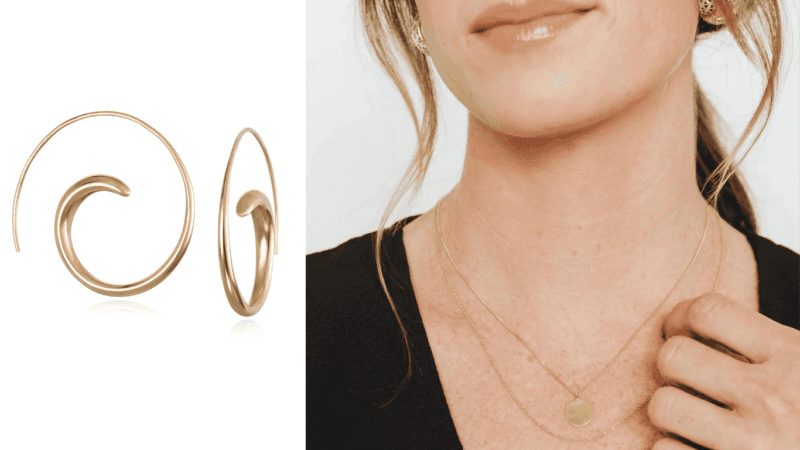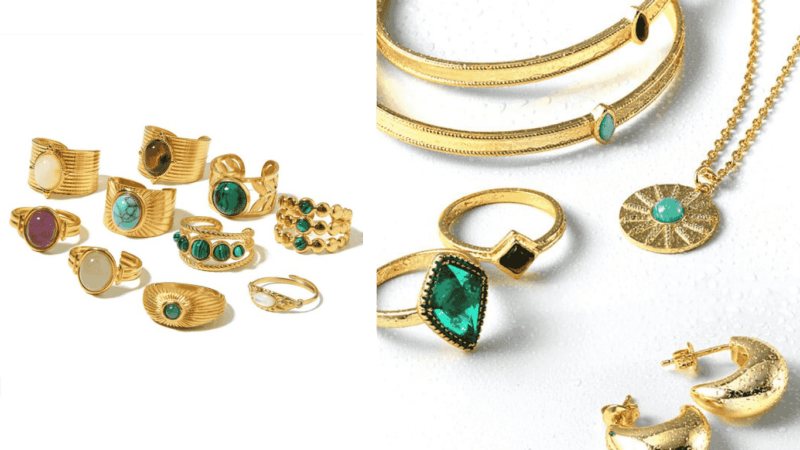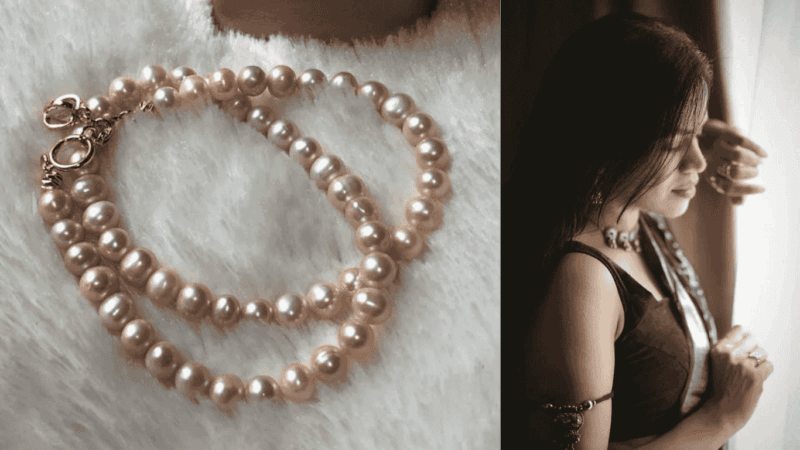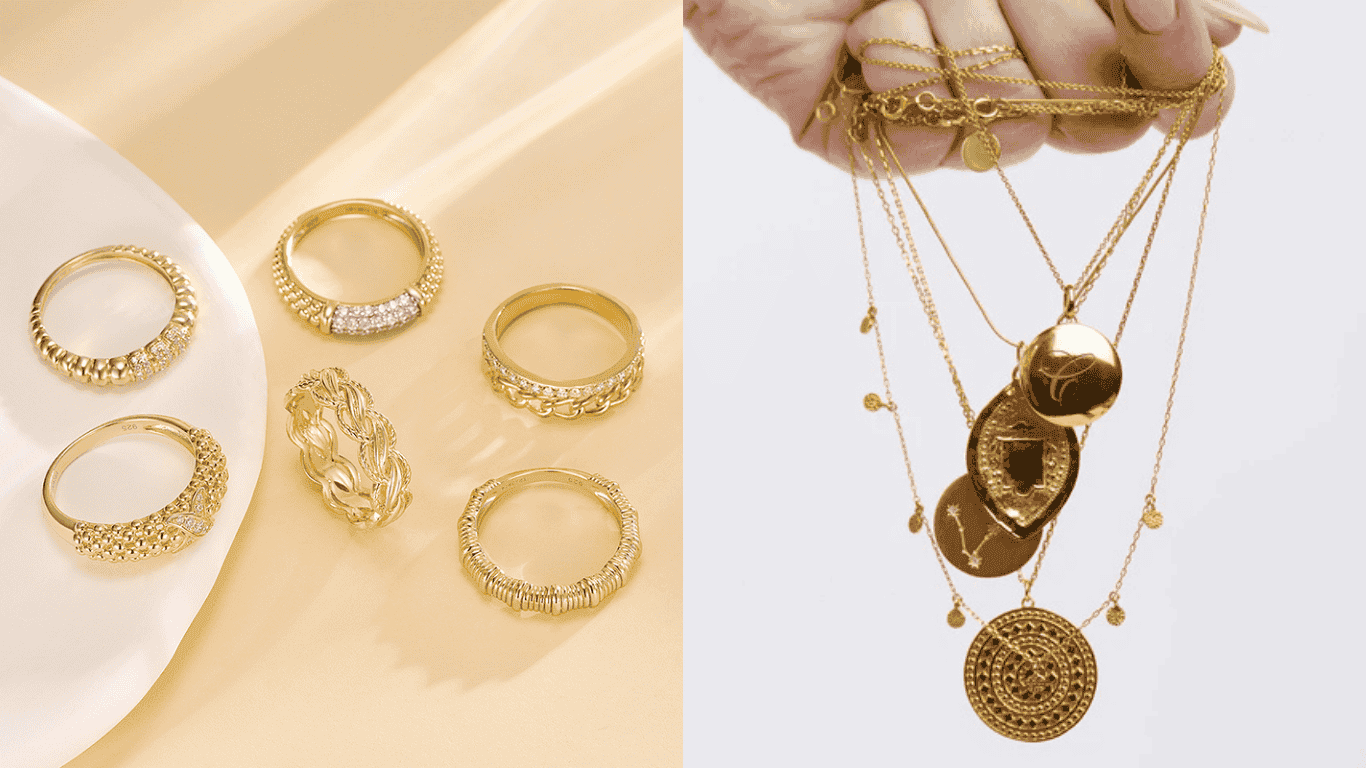What is Vermeil Jewelry? The Complete Guide to Understanding This Luxurious Choice
When shopping for jewelry, the options can be overwhelming. Among the various types of jewelry available, vermeil has become increasingly popular due to its blend of affordability and luxury. But what exactly is vermeil jewelry? In this comprehensive guide, we’ll explore the characteristics of vermeil, its benefits, care tips, and how it compares to other types of jewelry.
Table of Contents
Introduction to Vermeil Jewelry
Vermeil (pronounced “ver-may”) is a type of high-quality jewelry that combines a base of sterling silver with a thick layer of gold. This combination creates a luxurious appearance without the hefty price tag of solid gold. The growing popularity of vermeil jewelry is attributed to its aesthetic appeal, durability, and affordability, making it a preferred choice for fashion enthusiasts and casual wearers alike.
Characteristics of Vermeil
Composition
To qualify as vermeil, jewelry must meet specific criteria:
Base Metal: Vermeil must be made from at least 92.5% sterling silver. This high silver content provides durability and quality.
Gold Layer: The gold layer must be at least 10 karats (41.7% gold) and have a thickness of at least 2.5 microns. This ensures that the gold is substantial enough to resist wear and tarnishing.
Standards and Regulations
In the United States, the Federal Trade Commission (FTC) regulates the terminology and standards for vermeil jewelry. To be classified as vermeil, the piece must adhere to the following:
Must be made from sterling silver.
Must have a minimum gold content of 10 karats.
Must have a gold layer that is at least 2.5 microns thick.
These regulations ensure that consumers receive quality products when purchasing vermeil jewelry.
Benefits of Vermeil Jewelry
Vermeil jewelry offers several advantages, making it a desirable option for many shoppers:
Affordability: Compared to solid gold, vermeil is significantly more affordable, allowing consumers to enjoy the luxury of gold without breaking the bank.
Durability: The sterling silver base provides strength, while the thick gold layer offers a protective coating that enhances longevity.
Versatility: Vermeil jewelry can easily transition from casual to formal settings, making it suitable for various occasions.
Hypoallergenic Properties: Most vermeil jewelry is made from sterling silver, which is less likely to cause allergic reactions compared to other base metals.
Aesthetic Appeal: With its warm, rich color, vermeil jewelry has a beautiful luster that closely resembles solid gold.
How to Care for Vermeil Jewelry
To maintain the beauty and longevity of vermeil jewelry, proper care is essential. Here are some tips:
Avoid Moisture: Keep your vermeil jewelry away from water, as moisture can accelerate tarnishing. Remove your jewelry before swimming, showering, or exercising.

Store Properly: Store pieces in a cool, dry place, ideally in a soft pouch or anti-tarnish cloth to prevent scratching and tarnishing.
Clean Gently: Use a soft cloth to clean your jewelry. Avoid abrasive materials and harsh chemicals, which can damage the gold layer.
Limit Exposure to Chemicals: Keep your jewelry away from perfumes, lotions, and cleaning products, as these can cause tarnishing and damage.
Regular Maintenance: Occasionally, take your jewelry to a professional for cleaning and inspection to keep it in optimal condition.
Vermeil vs. Other Types of Jewelry
Understanding how vermeil compares to other types of jewelry can help consumers make informed purchasing decisions.
Vermeil vs. Gold-Plated
Material: Vermeil is made with a sterling silver base, while gold-plated jewelry may use various base metals.
Gold Thickness: Vermeil has a thicker layer of gold (at least 2.5 microns) compared to gold-plated jewelry, which can have a thinner layer.
Durability: Due to its thicker gold layer, vermeil tends to be more durable and longer-lasting than standard gold-plated pieces.
Vermeil vs. Solid Gold
Cost: Solid gold is significantly more expensive than vermeil. Vermeil offers a similar look at a fraction of the price.
Weight: Solid gold is heavier than vermeil, which may be a consideration for some consumers.
Longevity: Solid gold does not tarnish and is highly durable, whereas vermeil can wear down over time, especially if not cared for properly.
Vermeil vs. Sterling Silver
Appearance: Vermeil has a gold layer that gives it a luxurious appearance, while sterling silver has a cooler, more understated look.
Price: Sterling silver is generally less expensive than vermeil due to the lack of gold.
Care: Both types of jewelry require similar care, but vermeil may need extra attention to maintain its gold layer.
Popular Vermeil Jewelry Styles
Vermeil jewelry comes in a wide variety of styles, appealing to different tastes and fashion trends. Some popular styles include:
Necklaces: From delicate chains to bold statement pieces, vermeil necklaces can enhance any outfit.
Earrings: Available in numerous designs, including hoops, studs, and drop earrings.
Bracelets: charm bracelets, cuffs, and bangles that add a touch of elegance to the wrist.
Rings: From simple bands to intricate designs, vermeil rings are perfect for stacking or wearing alone.
Customizable Options: Many brands offer personalized vermeil jewelry, allowing customers to create unique pieces.
Where to Buy Vermeil Jewelry
Finding quality vermeil jewelry is essential for ensuring that you receive a legitimate product. Here are some recommended places to shop:
Reputable Online Retailers: Websites like Mejuri, Etsy, and Amazon offer a range of vermeil options from trusted sellers.
Jewelry Boutiques: Local jewelry shops often carry collections of vermeil pieces, allowing you to see them in person.

Department Stores: Many larger department stores have jewelry sections featuring vermeil jewelry from various brands.
Specialty Stores: Look for stores that specialize in affordable fashion jewelry, as they often have a selection of vermeil items.
Q&A
What is vermeil jewelry?
Vermeil jewelry is made from a sterling silver base that has been plated with a thick layer of gold, offering the appearance of solid gold at a more affordable price.
How long does vermeil jewelry last?
With proper care, vermeil jewelry can last several years, but the gold layer may wear down over time, especially with frequent wear.
Is vermeil jewelry hypoallergenic?
Most vermeil jewelry is made from sterling silver, which is generally hypoallergenic. However, it’s essential to check for specific allergy concerns if you have sensitivities.
How can I tell if jewelry is vermeil?
Vermeil jewelry should be marked with “vermeil,” “925,” or a similar indication that it is made from sterling silver and has a gold layer.
Can I wear Vermeil jewelry every day?
While vermeil jewelry can be worn daily, it is advisable to remove it during activities involving moisture, chemicals, or rough handling to prolong its lifespan. Vermeil jewelry offers a beautiful and affordable alternative to solid gold, combining the elegance of gold with the durability of sterling silver. Its unique characteristics, benefits, and versatility make it a popular choice among jewelry enthusiasts. By understanding how to care for vermeil and how it compares to other types of jewelry, consumers can make informed decisions that align with their personal style and budget.
Whether you’re looking for a stunning necklace
a delicate bracelet or a pair of eye-catching earrings, vermeil jewelry can be an excellent addition to your collection. With proper care and attention, these pieces can provide the luxurious look you desire without the hefty price tag. Happy shopping!
What is a Christina Piercing? Guide to Christina Piercing Jewelry
In the world of body modifications, piercings have emerged as a popular form of self-expression and personal style. Among the various types of piercings, the Christina piercing is a distinctive choice that attracts individuals looking for something unique. In this comprehensive guide, we will explore what a Christina piercing is, the types of jewelry suitable for it, aftercare, and much more.
Introduction to Christina Piercings
A Christina piercing is a type of female genital piercing located at the top of the vulva, specifically on the mons pubis. Named after Christina Aguilera, who famously sported this piercing, it has gained popularity among individuals seeking to enhance their aesthetic and personal expression. This piercing is often associated with femininity and can accentuate the natural curves of the body.
Anatomy of a Christina Piercing
Understanding the anatomy of a Christina piercing is essential for anyone considering this modification. Here are some key points:
Location: The Christina piercing is positioned just above the clitoral hood, near the pubic mound.
Appearance: It typically consists of a decorative piece that is visible externally, creating an eye-catching effect.
Healing Zone: The skin in this area is sensitive, which is why proper care is crucial for healing.
Types of Jewelry for Christina Piercings
Choosing the right jewelry is vital for comfort and aesthetics. Below, we explore the types of jewelry that work best for Christina piercings.
Common Jewelry Styles
Curved Barbell: A popular choice, this style is often made with a bead on each end. It offers flexibility and comfort.
Captive Bead Ring: This style features a bead that is held in place by the ring itself, providing a unique look.
Studs: For those who prefer a simpler design, a decorative stud can be an elegant choice.
Spiral Jewelry: This option adds a whimsical touch and can be a conversation starter.
Material Choices
The material of the jewelry is crucial for both comfort and health. Recommended materials include:
Surgical Stainless Steel: A popular choice for its durability and hypoallergenic properties.
Titanium: Another excellent hypoallergenic option, titanium is lightweight and corrosion-resistant.
Gold: If opting for gold, ensure it is at least 14 karats to reduce the risk of irritation.
Bioplast: A flexible and biocompatible material, bioplast is often recommended for sensitive skin.
Getting a Christina Piercing
If you’re considering a Christina piercing, understanding the procedure can help alleviate concerns.

The Procedure
Consultation: Start with a consultation at a reputable piercing studio. Discuss your desires and any concerns with the piercer.
Preparation: The piercer will clean the area and mark the spot for the piercing.
The Piercing: Using a sterile needle, the piercer will create the hole, inserting the chosen jewelry immediately after.
Post-Piercing Care: After the procedure, the piercer will provide you with aftercare instructions to ensure proper healing.
Pain and Healing Time
Pain Level: While pain tolerance varies from person to person, many report a quick, sharp sensation during the piercing, followed by mild discomfort.
Healing Time: The healing process for a Christina piercing typically ranges from 4 to 6 weeks, though it can take longer for some individuals.
Aftercare Tips for Christina Piercings
Proper aftercare is crucial for minimizing the risk of infection and ensuring smooth healing. Here are some essential aftercare tips:
Clean Regularly: Use a saline solution or a mild soap to clean the piercing twice a day.
Avoid Harsh Chemicals: Steer clear of alcohol, hydrogen peroxide, and other harsh substances that can irritate the piercing.
Wear loose clothing: Opt for breathable, loose-fitting clothing to avoid friction on the piercing site.
Avoid Swimming: Refrain from swimming in pools, hot tubs, or oceans until the piercing has fully healed.
Don’t Change Jewelry prematurely. Wait until the piercing is completely healed before switching out jewelry to avoid irritation or damage.
Potential Risks and Considerations
As with any body modification, there are potential risks to consider:
Infection: One of the most common risks, which can occur if proper aftercare isn’t followed.
Allergic reactions: Some individuals may have sensitivities to certain metals, leading to irritation or allergic reactions.
Keloids: In some cases, scar tissue may form around the piercing, creating raised bumps.
Discomfort During Healing: It’s normal to experience some discomfort, but severe pain should be addressed by a healthcare professional.
Comparison with Other Piercings
Understanding how the Christina piercing compares to other types of piercings can help potential clients make informed choices.
Christina vs. Vertical Clitoral Hood Piercing
Location: The Christina piercing is located above the clitoral hood, while the vertical clitoral hood piercing is through the hood itself.
Jewelry Options: Both types can use similar jewelry styles, but vertical hood piercings often feature longer barbells for better movement.
Pain Levels: The pain levels can vary, with some individuals finding vertical hood piercings to be more intense.
Christina vs. Labret Piercing
Location: The labret piercing is typically located on the lower lip, while the Christina piercing is in the genital area.
Aesthetic Appeal: Both piercings can enhance appearance but serve different stylistic goals.
Care Requirements: Aftercare for both piercings requires similar attention to hygiene and avoiding irritants.
FAQs
What is a Christina piercing?
A Christina piercing is a female genital piercing located at the top of the vulva, above the clitoral hood.
Is a Christina piercing painful?
Pain tolerance varies from person to person, but many describe the sensation as a quick, sharp feeling followed by mild discomfort.
How long does it take for a Christina piercing to heal?
The healing time for a Christina piercing typically ranges from 4 to 6 weeks, though individual experiences may vary.
What types of jewelry can I use for a Christina piercing?
Common jewelry styles include curved barbells, captive bead rings, studs, and spiral jewelry, with materials such as surgical stainless steel, titanium, gold, and bioplast.
Can I wear a Christina piercing every day?
Yes, many individuals wear their Christina piercings daily, but proper care and hygiene are essential for maintaining the piercing.
Conclusion
A Christina piercing is a unique and stylish way to express oneself. Understanding the anatomy, jewelry options, care tips, and potential risks associated with this type of piercing is crucial for anyone considering it. With proper aftercare and attention, a Christina piercing can be a beautiful addition to your body art. If you’re thinking about getting one, be sure to consult with a professional piercer to ensure a safe and successful experience. Enjoy your journey into body modification and the opportunity to express your individuality!

